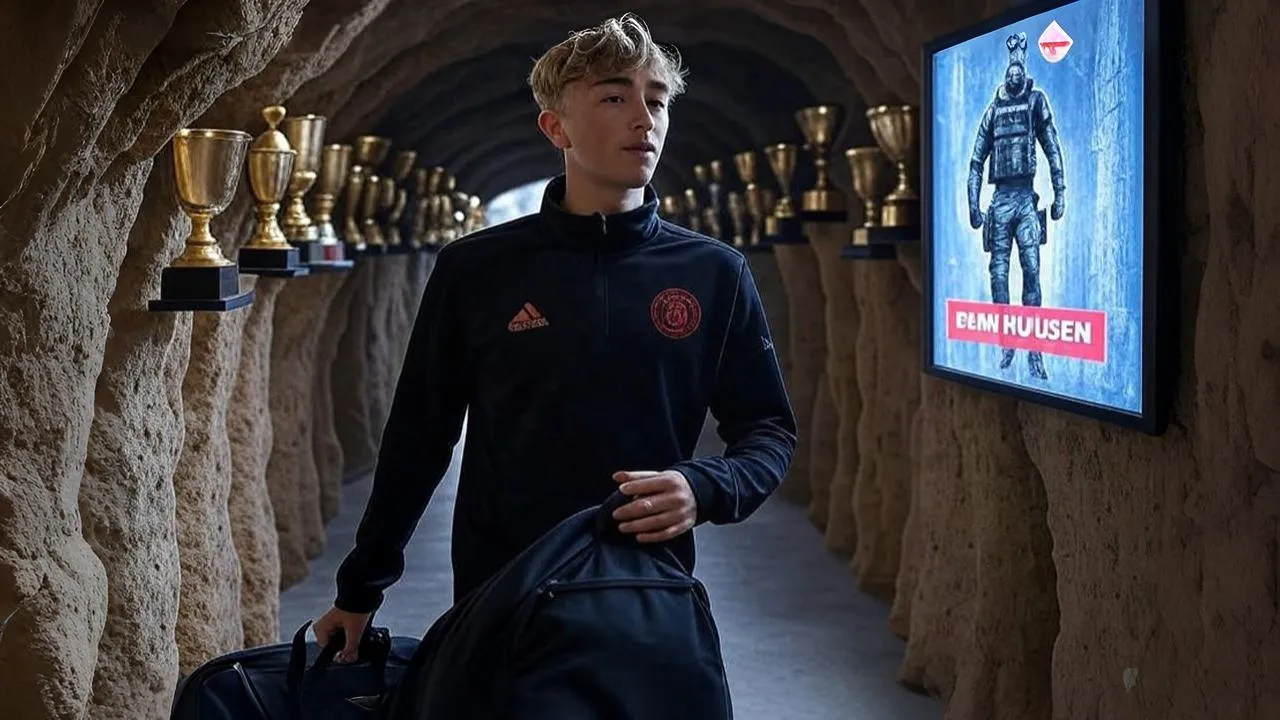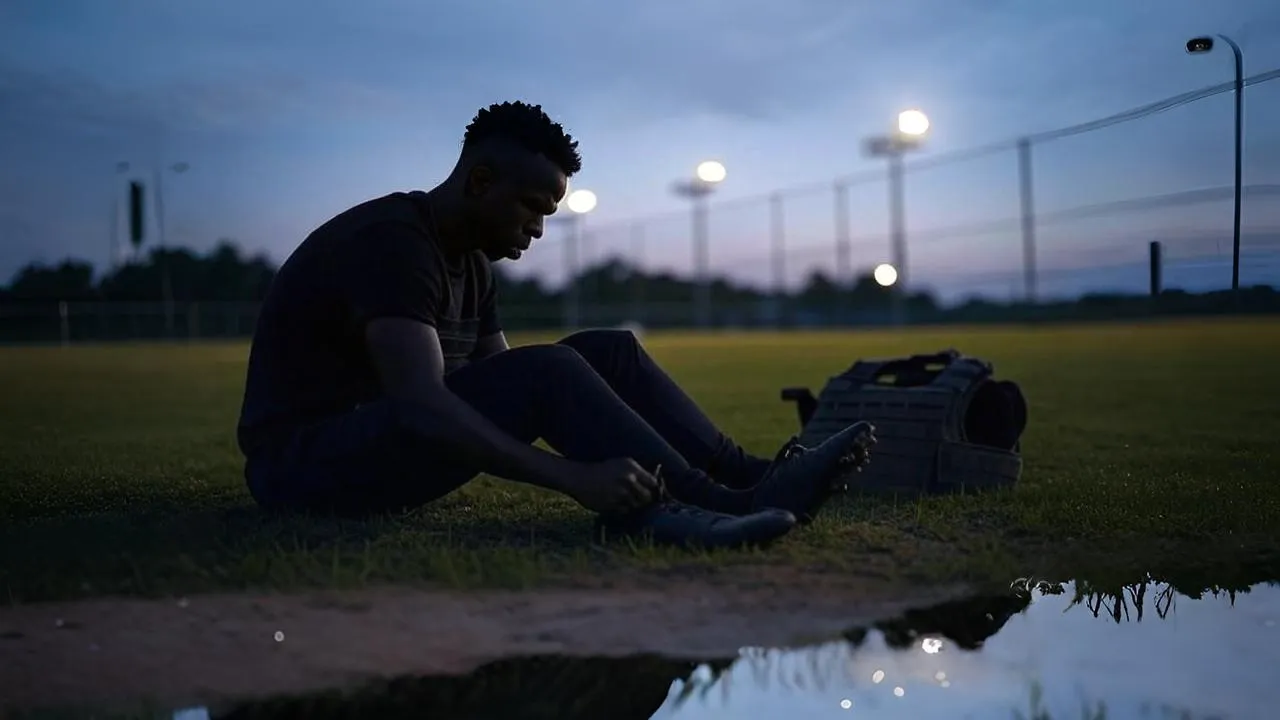Xabi Alonso’s tactical reset: Leverkusen’s back three ditched for a 4-3-3 Madrid rebuild
New Real Madrid head coach Xabi Alonso will leave behind the back-three system that defined his success at Bayer Leverkusen, opting instead for a 4-3-3 shape designed around Madrid’s squad limitations and tactical needs.
02 Jun 2025 - 16.06
3 minutes

AI-generated image. Editorial use only.


Xabi Alonso is set to make his most radical tactical shift yet as he prepares for his first season in charge of Real Madrid. The 3-4-2-1 formation that defined his rise at Bayer Leverkusen will not carry over to the Bernabéu. Instead, Alonso is implementing a 4-3-3 setup tailored to the current dynamics of the Madrid squad.
He led Leverkusen to an invincible Bundesliga title and reached the UEFA Europa League final in his first full season, but according to MARCA, Alonso sees no room for a back three in Madrid’s current framework. Injuries to key central defenders have made the system tactically unsustainable.
Éder Militão has suffered back-to-back ACL injuries and remains sidelined, while David Alaba has yet to return from a long-term knee issue. Antonio Rüdiger also ended the campaign prematurely following surgery. As a result, Alonso will start pre-season with only two fit natural centre-backs: young Raúl Asencio and Dean Huijsen, a 19-year-old left-footed defender signed from Bournemouth for €59.5 million.

Abandoning the back three was a necessity rather than a preference. Alonso’s tactical rebuild extends to the full-backs as well. Trent Alexander-Arnold, newly arrived from Liverpool, will be deployed in a traditional right-back role, rather than reprising the inverted wing-back freedom granted to Jeremie Frimpong under Alonso at Leverkusen.
Midfield evolution
The shift to a 4-3-3 will also reshape Madrid’s midfield structure. Jude Bellingham is expected to operate in a freer left-sided role, while Fede Valverde may take on more responsibility in transitional pressing. Eduardo Camavinga and Aurélien Tchouaméni are likely to rotate at the base, offering defensive balance and distribution.
Alonso’s pressing model
One of Alonso’s hallmarks at Leverkusen was high-regain pressing, particularly through aggressive triggers in the half-spaces. While Real Madrid lacked consistent pressing structure last season, Alonso is expected to implement coordinated pressure as a core principle—especially in the attacking third.
Pre-season as testing ground
Madrid’s summer schedule includes fixtures against LA Galaxy, Chelsea, and Club América, providing early opportunities to trial the 4-3-3 framework. Tactical fluidity, role experimentation, and youth integration are expected focal points of the pre-season tour.
Historical echoes at Madrid
Alonso’s 4-3-3 return is also a nod to Madrid’s storied past. The system formed the tactical base under Vicente del Bosque in the early 2000s and Zinédine Zidane during the club’s Champions League three-peat. In both eras, 4-3-3 facilitated positional clarity, creative freedom, and big-match resilience—ideals Alonso now hopes to revive.
Vinicius Junior: key but accountable
This shift will also involve Vinicius Junior. While the Brazilian remains indispensable in attack, his off-ball contribution has been scrutinised in recent campaigns. Alonso, known for demanding discipline from wide players, is expected to place clear expectations on Vinicius to contribute more defensively without compromising his attacking output.

According to Goal.com, Alonso is planning a direct conversation with Vinicius regarding his defensive responsibilities. The Spanish coach views defensive effort from wide players as essential to Madrid’s overall balance, and expects Vinicius to commit more consistently to the team’s collective structure.
Alonso’s tactical discipline in wide areas was notably reflected during his time at Leverkusen, where players like Florian Wirtz thrived in a roaming playmaker role within a structured pressing unit. However, that level of central freedom is not expected to feature in Madrid’s new system. Instead, the 4-3-3 model will prioritise positional clarity and defensive balance, requiring even the most creative players to operate within well-defined zones and responsibilities.
Share your thoughts, join the conversation!

Barcelona player delivers blunt verdict on Flick: “He wasn’t fair to me”

Tottenham Hotspur part ways with Ange Postecoglou: European glory fails to make up for Premier League collapse

Gabriel extends Arsenal contract to 2029 as club reinforces defensive core

Jason Wilcox takes charge of Manchester United’s transfer strategy in executive reshuffle

Liam Delap explains Chelsea choice: trophies, Palmer bond and Maresca trust

Jack Grealish set for Club World Cup snub as Man City consider summer sale


